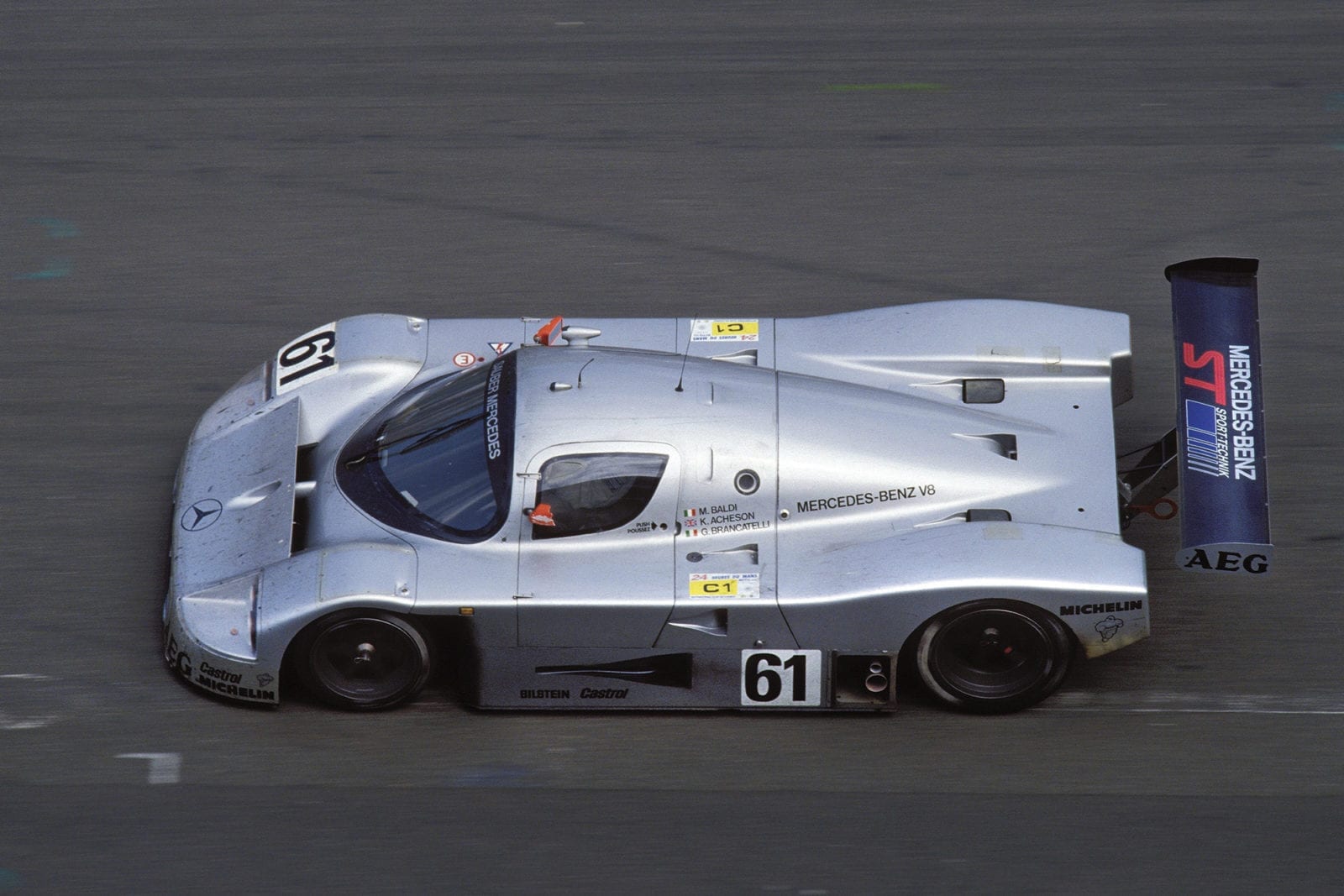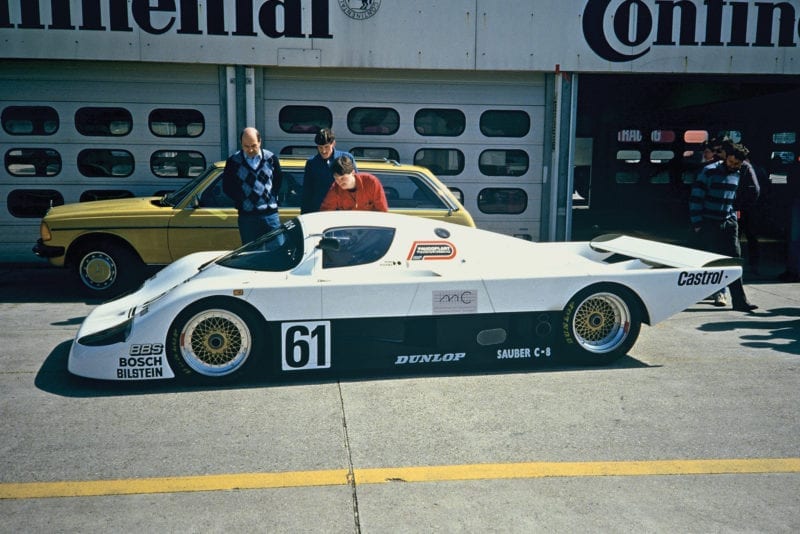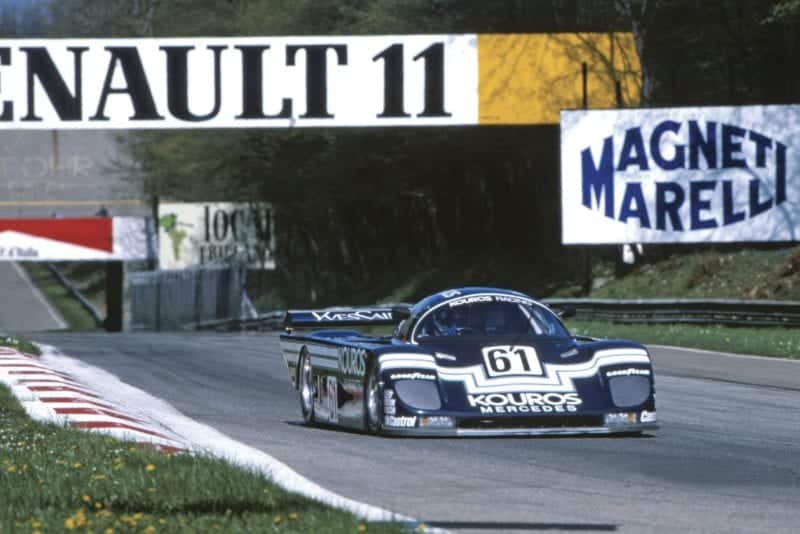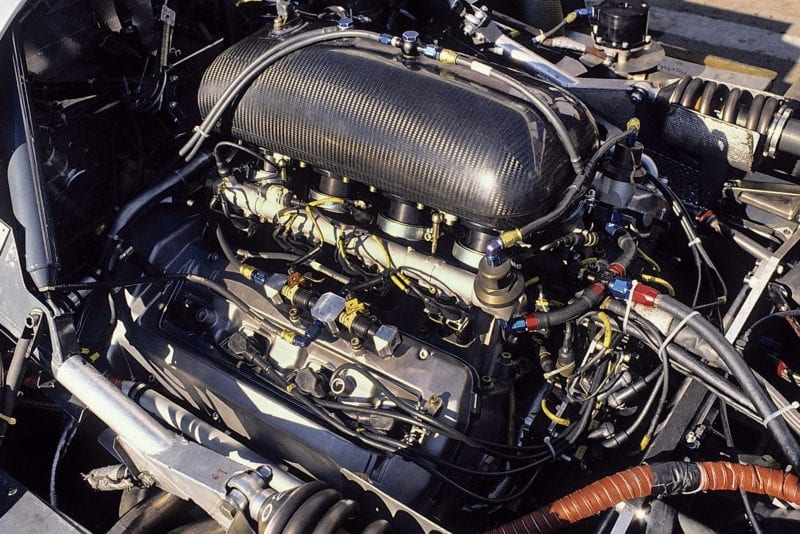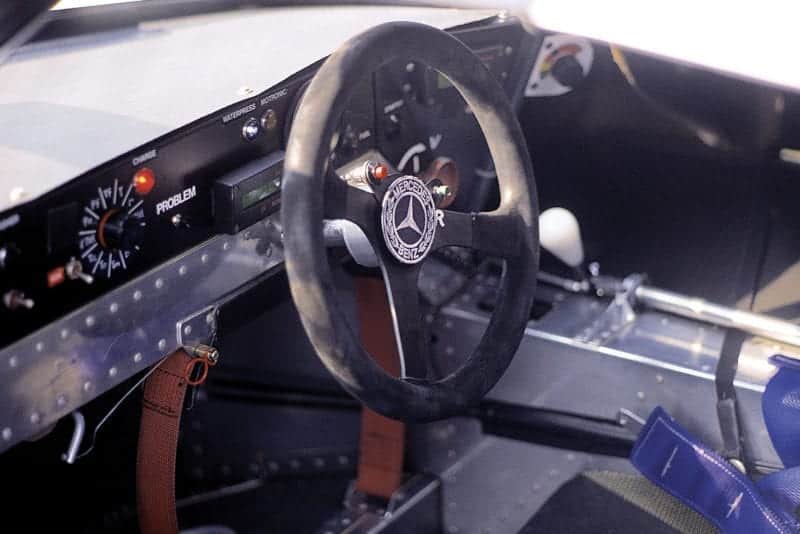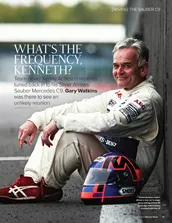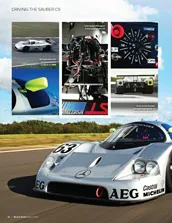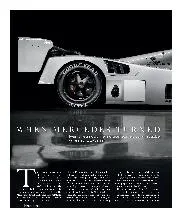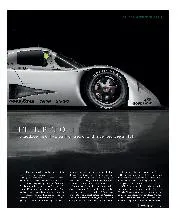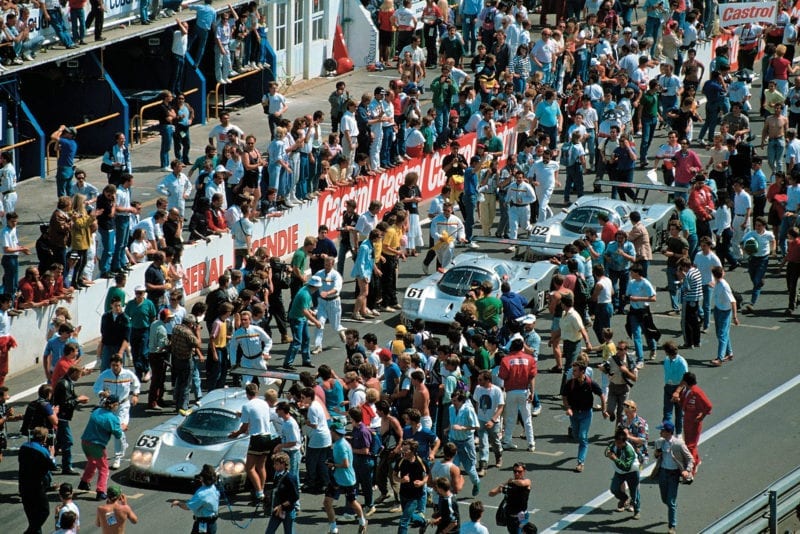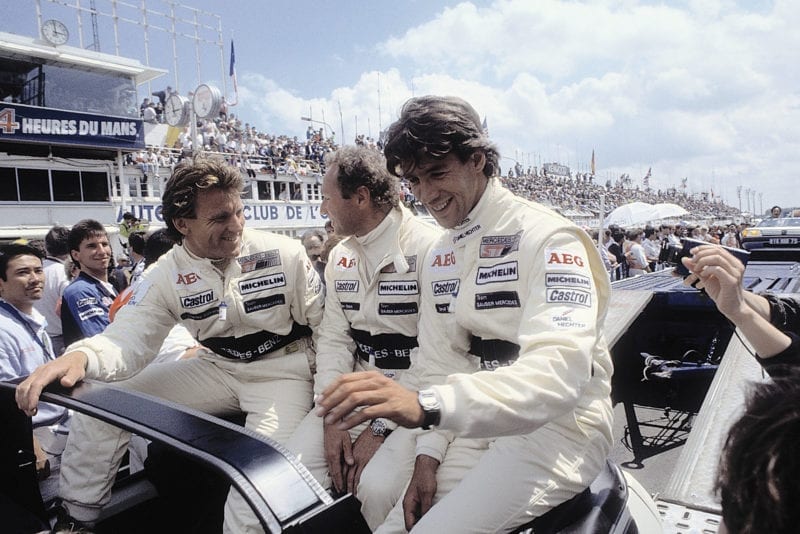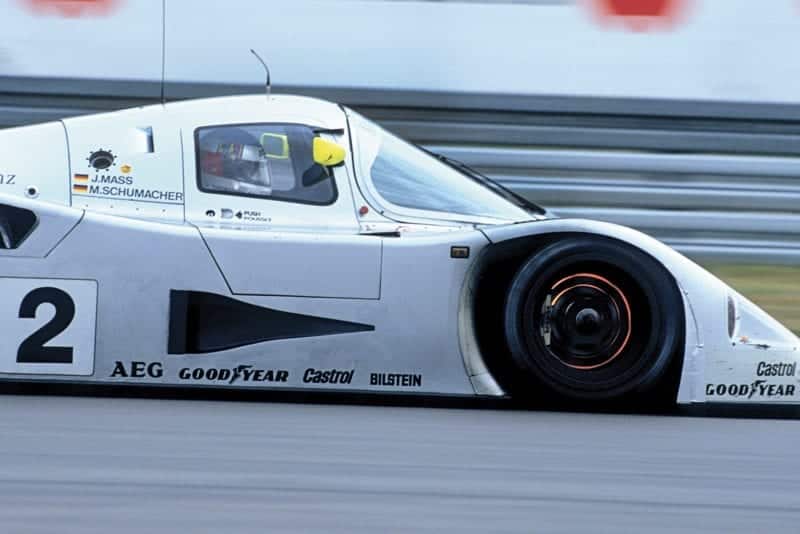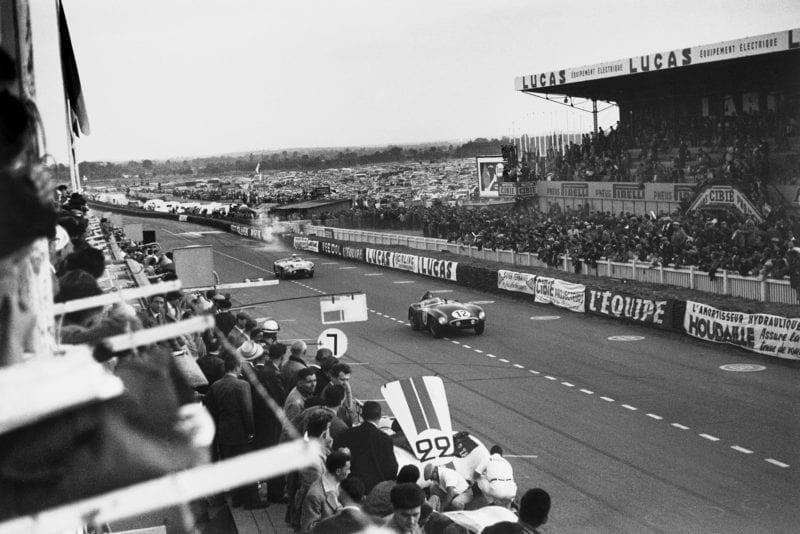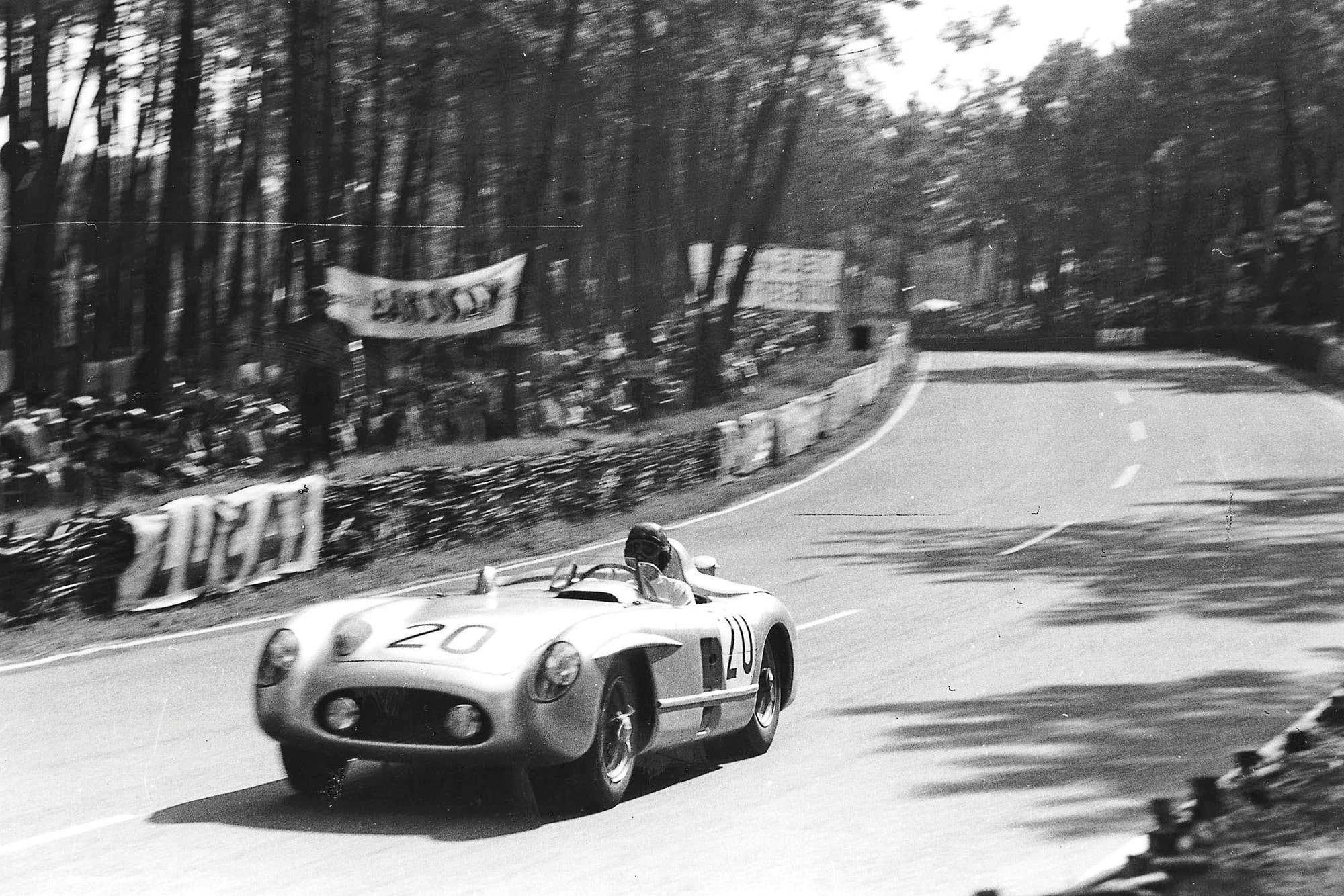“We were just a group of dreamers,” says Ress, who also did the calculations for the suspension geometry of the C6 using the manufacturer’s computer power. “We always believed that a low-revving, big-volume turbo engine would be the most fuel-efficient. But it took three years from Peter Sauber’s first contact for Mercedes to be convinced.”
The first Sauber powered by a Mercedes engine, the C8, broke cover in 1985. The turbocharged M117 powerplant had, officially at least, been developed by renowned Swiss tuner Heini Mader. The truth was slightly different, however: the new race engine was designed and built in-house at Mercedes.
Welti describes the Mader story as a “smokescreen” to hide the true origins of the V8s, put about by a manufacturer who still wasn’t officially involved in motor sport. “Maybe Mader built up one or two engines, but no more,” he says. Ress suggests that the original plan was for Mader to undertake the project, but recalls everything being quickly taken in-house because Mercedes wanted to be in control of an engine that bore its badges.
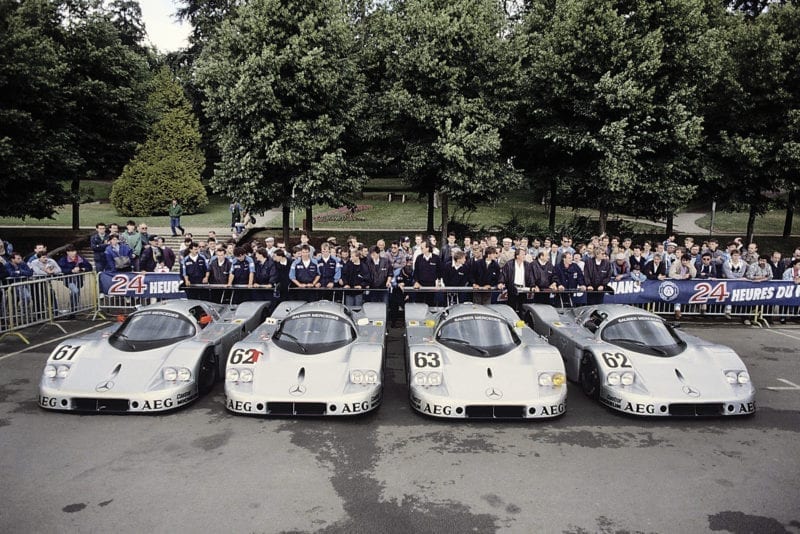
The official team photo, with number 63 going on to win at La Sarthe
Daimler AG
The Mercedes engine wouldn’t make its maiden race start until 1986, however. The C8 non-started on its one appearance of the previous year at Le Mans when John Nielsen, who would win the race with Jaguar in 1990, crashed on the Mulsanne Straight. It didn’t reappear that season.
“Le Mans in 1988 was a disaster, with a high-speed blowout”
Sauber undertook a partial world championship season, which included a fortuitous victory in a two-part wet race at the Nürburgring in ’86 with backing from the Yves St Laurent aftershave brand Kouros. A deal that stretched through the 1987 season had been brokered by former BMW Motorsport boss Jochen Neerpasch, then working for Mark McCormack’s IMG management group. The German would be brought in by Mercedes to head up its return to racing, a decision which was taken in early January 1988.
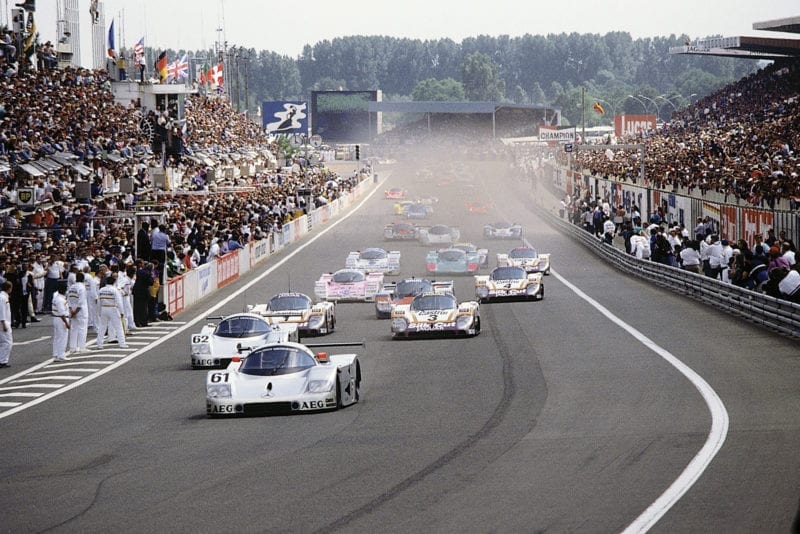
Kenny Acheson, Mauro Baldi, Gianfranco Brancatelli lead early on at Le Mans in 1989
Daimler AG
The Swiss operation now became Team Sauber Mercedes and with the AEG sponsorship undertook a first full-season campaign in the Group C ranks. It did win the WSPC opener at Jerez with a lone C9 shared by Jean-Louis Schlesser, Mauro Baldi and Jochen Mass, but the truth was that the team wasn’t ready to take on reigning champion Jaguar.
The Mercedes decision to put its full weight behind Sauber hadn’t been taken until January 12, yet the Jerez WSPC opener was on March 6. The programme remained a one-car effort until Silverstone in early May, the final race before Le Mans. The first factory assault by Mercedes at the Circuit de la Sarthe since ’55 turned out to be disaster: Klaus Niedzwiedz suffered a high-speed blow-out on the Mulsanne Straight during qualifying; tyre supplier Michelin couldn’t guarantee it wouldn’t happen again, and Mercedes took the inevitable decision to withdraw from the race.
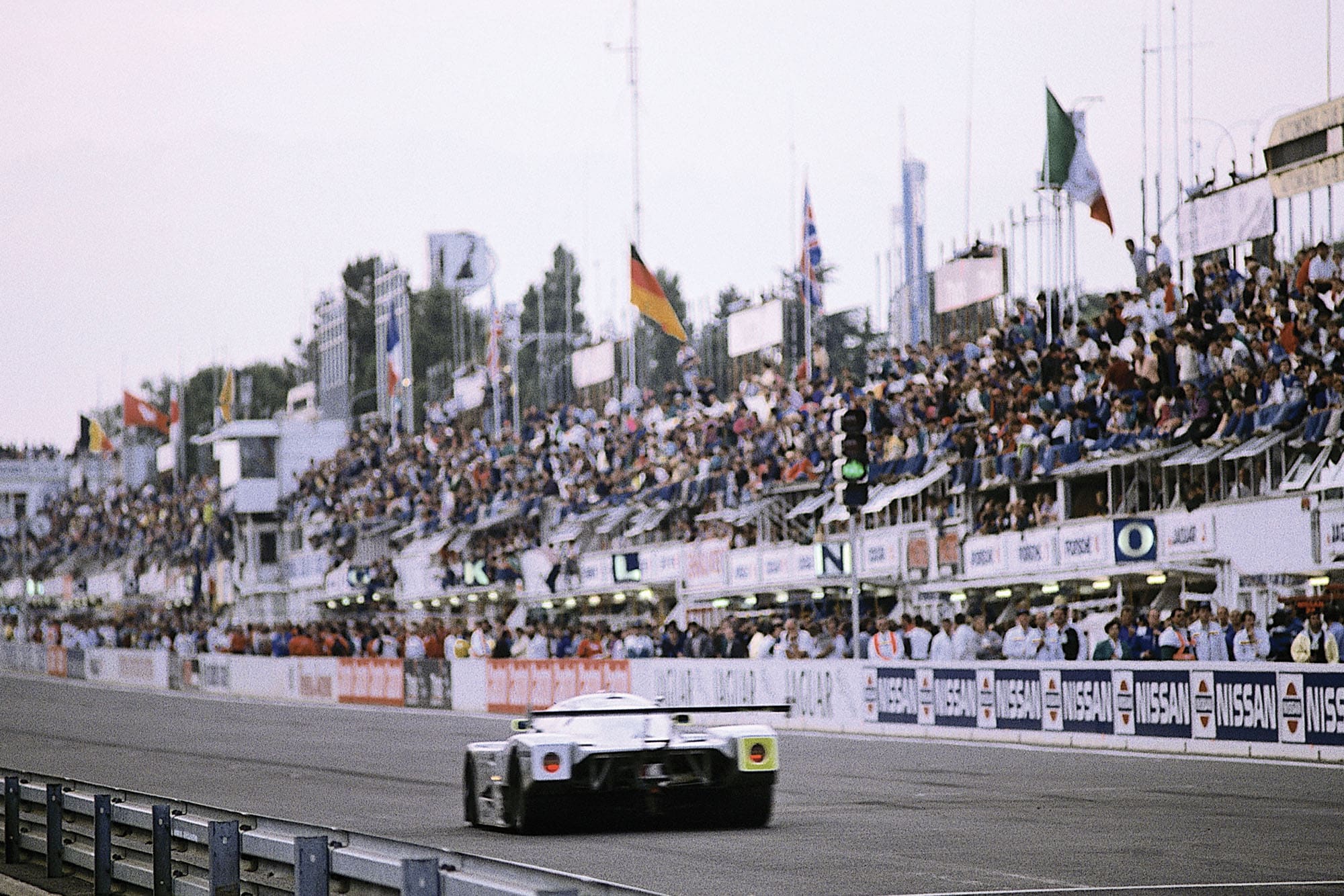
By Le Mans, Sauber had a new engineer running the race operations of the team. Dave Price joined from the Richard Lloyd Racing Porsche squad after being approached by Welti in the pitlane during the Silverstone 1000Km meeting in early May. He recalls arriving at an outfit that had yet to organise itself in a way befitting of a full factory team.
